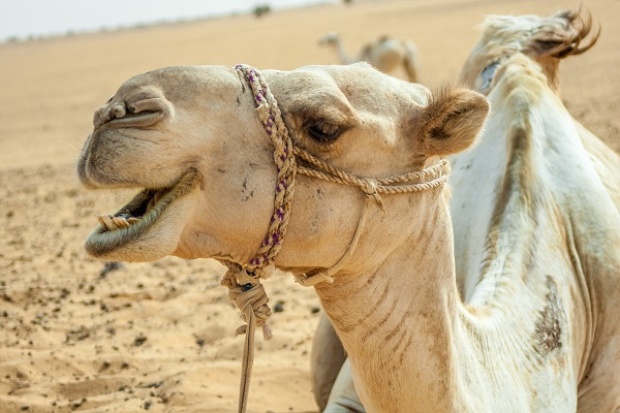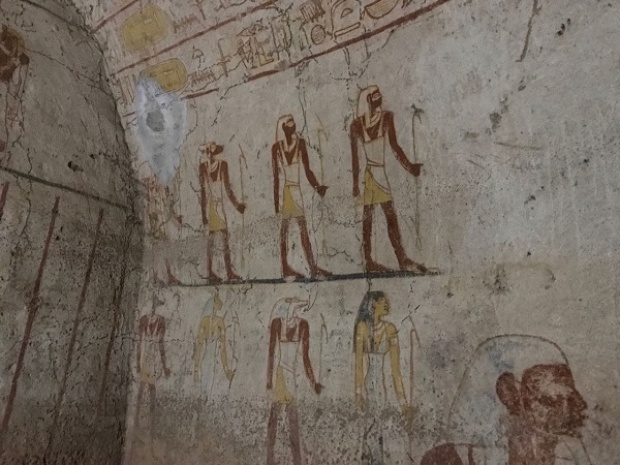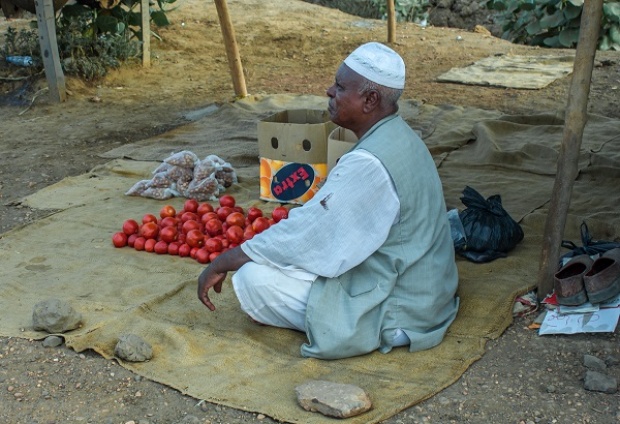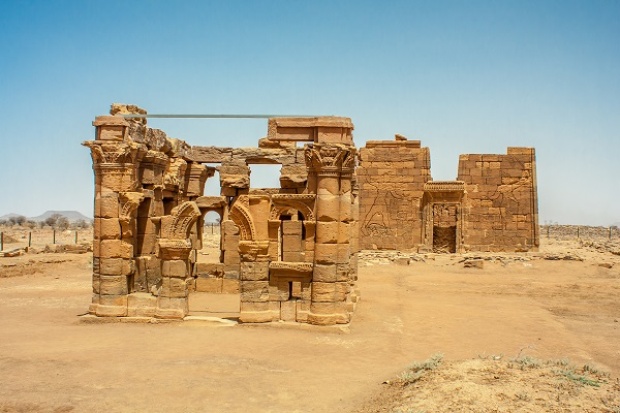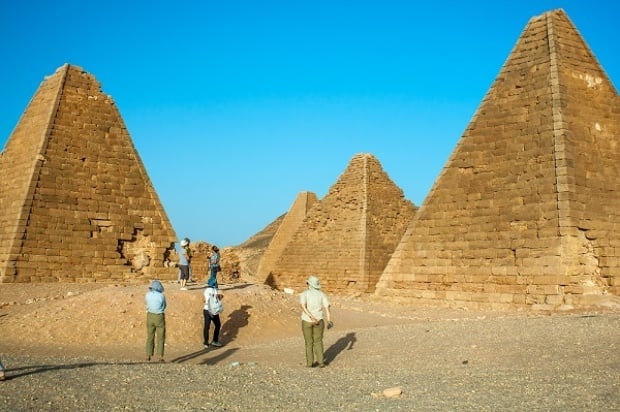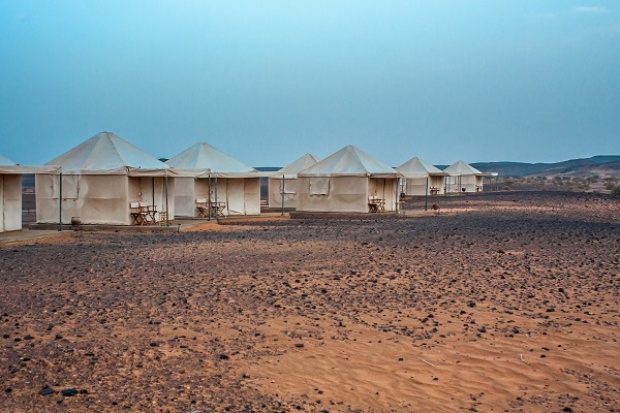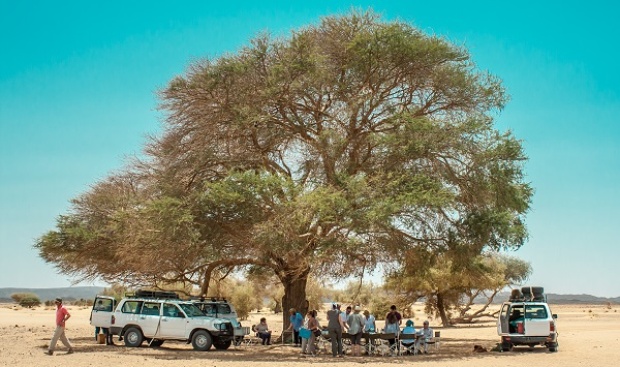Exploring Sudan
- The Western and Bayuda Deserts
- Crossing the River Nile
- Confluence of the Blue and White Nile
- Kerma Necropolis on the Isle of Sai
- Holy mountain of Jebel Barkal
- Royal City of Meroe
Overview
On this tour of Sudan, we include all the must-do experiences such as viewing the confluence of the Blue Nile, which originates in Ethiopia (70% of the Nile’s water comes from here) and the White Nile, which originates in Uganda, to form the Nile River. A visit to the Necropolis of Meroë, probably the most photographed pyramids of Sudan and the Royal City is another highlight.
This suggested, 10-day guided tour is designed to make the most of Sudan's unknown kingdoms.
Itinerary
Day 3: Khartoum – Tombos (650 km / 8 hours)
08:00 - Pick up from your hotel in Khartoum. Departure northwards across the Western Desert. En route we will stop at a local chai house to experience the rural life-style. We may encounter herds of camel with their cameleers. After 600 km we reach the Nile again in the city of Dongola. Here we cross the Nile via a bridge and continue north until we find our pre-set camp in the desert.
Time to shower and then dinner.
Overnight: Pre-set camp near Tombos (breakfast, picnic lunch and dinner)
Day 1: Arrival in Khartoum
Arrival at Khartoum Airport. Meet and greet with the guide and transfer to the hotel. Time at leisure. At sunset enjoy a cruise to see the confluence of the 2 Niles.
Overnight: Grand Holiday Villa 4**** (snack on arrival and dinner)
Day 2: Khartoum – city tour
Breakfast at the hotel.
We then drive near the Presidential Palace where in 1885 General Gordon was beheaded by the Mahdi’s troops. We reach Omdurman, the old capital of Sudan, where we see the exterior of the Mahdi’s Tomb and the interesting Khalifa’s House. It holds a small museum about the Mahdyia. We then go to the colourful souk of Omdurman.
Lunch included at a local restaurant on the Nile.
Proceed to Ahmed al Nil cemetery to see the Dervish ceremony.
Return to the hotel and enjoy dinner.
Overnight: Grand Holiday Villa 4**** (breakfast, lunch, dinner)
Day 4: Tombos – 3rd cateract – Sebu – Soleb – Tombos (220 km)
Today we drive north to reach the Third Cateract and take amazing photos of the largest natural obstacle which prevented the Egyptians to colonize Kerma until the New Kingdom. We then make a quick stop to see some petroglyphs in Wadi Sebu, before continuing further north to Wawa. Here we cross the Nile River on a small fisherman boat to reach the amazing Temple of Soleb built by the great Pharaohs of the New Kingdom, Amenothep III. Once back on the east side of the river we continue north to Abri where we cross the Nile again on a pontoon (ferry) to the Isle of Sai. On the island you will see Kerma Necropolis, ruins of Egyptian Meroitic temples, Christian churches and a Turkish fort. This is an incredible mix of findings all on one Island! Back on the main land we drive back to our pre-set camp.
Overnight: Pre-set camp near Tombos (breakfast, picnic lunch, dinner)
Day 05: Tombos – Kerma – Old Dongola – Karima (320 km)
Today we drive to Kerma. Here we visit the ruins of the city where the first Kingdom of Kush started. We visit defuffa west, the mysterious incredible mud brick building dating back 4.000 years. Also visit the Kerma Museum. We then proceed south passing Nubian villages partially off road to reach the site of Old Dongola and the ruins of the Christian capital of Makuria. Another couple of hour’s drive will take us to Karima at the foot of the holy mountain Jebel Barkal.
Overnight: Nubian Rest House Karima (breakfast, picnic lunch, dinner)
Day 06: Karima – Jebel Barkal and the Necropolis of El Kurru (30 km)
Landmark in the Nubian Desert, Jebel Barkal ("Jebel" means mountain in Arabic) can be seen from a few dozen kilometers, whilst still in the open desert. At the foot of this wonderful and isolated red sandstone mountain, considered holy since the ancient times, there is a big temple, dedicated to the Pharaohs of the New Reign and to their patron, Amon. Amon's ancient "Pure Mountain", the Olympus of the Nubians, was the religious Nubian heart for more than 1000 years. Besides the ruins of the big temple there are still several sculptured granite rams that were supposed to border a long avenue that probably led to the pier on the Nile. In the mountain wall there is a big room decorated with bas-relief. The Royal Necropolis of the ancient city of Napata, the Nubian capital (from 800 to 400 B.C.) before the Meroitic period, had a large number of pyramids, located in three different places: few hundred meters north of Jebel Barkal; a dozen kilometers southwards from the holy mountain, in El Kurru; in Nuri, which is located on the other bank of the Nile. After lunch at the Nubian Rest House we then move south to the village of El Kurru where there is one of the necropolises of the ancient capital, Napata. Here we can visit one tomb, which is excavated in the rock under pyramids - partially collapsed - and it is decorated with images of the Pharaoh, of the gods and multicolour hieroglyphic inscriptions. The trip proceeds with a visit to a site in the desert, rich in fossil trunks. In the evening return to Karima.
Karima (the ancient Napata) was the capital of the Egyptian Kingdom during the 25th Dynasties. The Pharaoh Pye or Pianki (747-716 B.C) conquered all of the Nile Valley to the Delta – the 100 years of reign of the 25th Dynasty is considered the “Second Kingdom of Kush” – with Black Pharaohs ruling from Sudan to Egypt. In this period of time many pyramids where built in the Necropolis of El Kurru, Jebel Barkal and later in Nuri, where King Taharqa is buried. The last ruler of this dynasty: Tawentamani is buried in the El Kurru Necropolis and we visit his tomb.
Napata continued to be an important local religious centre also when the 25th Dynasty lost power to the 26th in the 6th century B.C. Napata was badly destroyed by the new rulers in the north and the capital was then moved to “Meroe” on the eastern side of the Bayuda Desert, in a very fertile area on the shore of the Nile and south of the Atbara River, which flows into the Nile.
In the 4th century B.C. the Necropolis was officially moved to Meroe as well, but a “Parallel Dynasty” remained back in Napata to maintain the temples. For this reason, we also find an amazing Meroitic Necropolis on the western side of the Jebel Barkal.
Overnight: Nubian Rest House Karima (breakfast, lunch, dinner)
Day 09: Meroe – the temples of Naga and Mussawart – Khartoum (240 km)
Breakfast at the camp, then we begin the journey to the south. We leave the asphalt road and drive for about 30 kms on a desert track among many camel thorn acacia trees to visit two archaeological
sites. Naga is one of the two centres that developed during the Meroitic period. In Naga, in a typical Saharan environment with rocks and sand, we find a temple dedicated to Apedemak (1st century A.D.): a wonderful building with bas-relief decorations depicting the god with a lion’s head, the Pharaoh,
noblemen and several ritual images. A few metres away there is a small and odd construction with arches and columns, named "kiosk", in which you will notice Egyptian, Roman and Greek styles, all at the same time. Not far away we reach another temple dedicated to Amon with many statues of rams and beautiful gates decorated with bas-reliefs. We then go to Mussawarat, not far away from Naga. This settlement is located in a beautiful valley crowned by hills. Here the ruins of a very big temple are visible; it once played an exceptional important role. Its main characteristic, the “Great Enclosure” is made up by constructions and boundary walls which surround a temple built in the 1st century A.D. Arrival in Khartoum North in the late afternoon. We immediately proceed to the Nuba Wrestling.
After the wrestling we proceed to the hotel for check in and overnight.
Overnight: Grand Holiday Villa 4**** (breakfast, picnic lunch, dinner)
Day 08: Meroe – the Necropolis and the Royal City of Meroe (20 km)
Morning dedicated to the visit of the pyramids. The Royal Necropolis of Meroe is located about 3 kms from the Nile on some hills covered by yellow sand dunes. Several pyramids stand out with their sharp shapes against the clear sky. Each one has its own funerary chapel with the walls fully decorated with bas-reliefs that show the King’s life and offers to the gods.
Lunch at Meroe Camp.
In the afternoon we move along the Nile to visit the ruins of the Royal City. The excavations confirm that the town of Meroe used to cover a large area and the Royal City was located in a central position, surrounded by suburbs and a boundary wall. Most of the area where the city is located, formed by many small hills covered by red clay fragments, has still to be excavated by the archaeologists. Sunset amongst the amazing pyramids.
The ancient Meroe was the capital between the IV century B.C. and the IV century A.D., and this time can be considered as the third Kushite Period. The Kingdom of Kush which housed the city is one of the earliest and most impressive states found south of the Sahara. The site of the city of Meroe is marked by more than two hundred pyramids in three groups, of which many are in ruins. They have distinctive size and proportions of Nubian pyramids.
Overnight: Meroe Tented Camp (breakfast, lunch, dinner)
Day 07: Karima – Nuri – Bayuda Desert – Meroe (320 km)
After breakfast, we cross the Nile and we visit the archaeological site of Nuri where we can see many pyramids among which there is also the one of the great Taharqa. We are now in the Bayuda Desert, an area bounded by the loop that the Nile forms between the 4th and the 6th Cataract. It is characterised by sharp black basalt mountains, most of them volcanic and typically cone-shaped. They alternate with level pebble stretches and large valleys crossed by dry wadis, where little vegetation can be seen. It is very likely to meet isolated groups of Bisharin nomads, who live in family groups in small huts made of intertwined branches close to the rare water wells, with their caravans and herds of camels and donkeys. After a picnic in the desert, we leave the main road and we drive across the desert to see a very traditional well. We arrive at the Nile and cross it on a pontoon (old ferry boat). Once on the other side we drive south and then, out of nowhere, we can get a glance at more than 40 pyramids, located on top of a hill, some of them perfectly preserved. They belong to the Royal Necropolis of Meroe. Arrival at the permanent tented camp of Meroe with a beautiful view of the pyramids.
Overnight: Meroe Tented Camp (breakfast, picnic lunch, dinner)
Day 10: Khartoum – City Tour and Departure
Breakfast at the hotel and morning at leisure.
13.00 - Lunch at a Lebanese Restaurant.
We visit the Archaeological Museum that, besides many beautiful objects, contains two beautiful temples rescued by UNESCO and moved from the Lake Nasser area, when it was flooded by water.
Transfer to the airport to check-in for your return flight home. (breakfast and lunch)
END OF SERVICE
Dates
On Request
Rates
On Request
Included
- Meeting at airport and private transfers to/from the hotel
- 2 Overnights at the Grand Holiday Villa Hotel on DBB
- 2 Overnight at the Nubian Rest house in Karima on FB
- 2 Overnight at the permanent Tented Camp in Meroe on FB
- 2 Overnights at the pre-set camp in Tombos
- Transport with Toyota Land Cruisers OR Toyota Hilux
- Meals as per itinerary
- Mineral water throughout and soft drinks for the picnic lunches.
- Cultural English speaking guide
- Entrance fees at National Museum and archaeological sites
- Photo permit
- Passport registration
Excluded
- Drinks
- Sudan entry visa and visa authorization
- Video camera permits at the archaeological sites
- Personal expenses
- Tips
- Travel, medical and luggage insurance
- International flights and airport taxes
- Items of a personal nature
Reservations
Fill out the form below to request a full itinerary.



